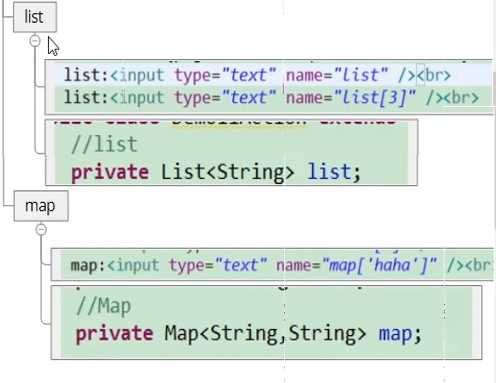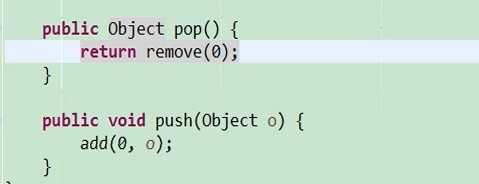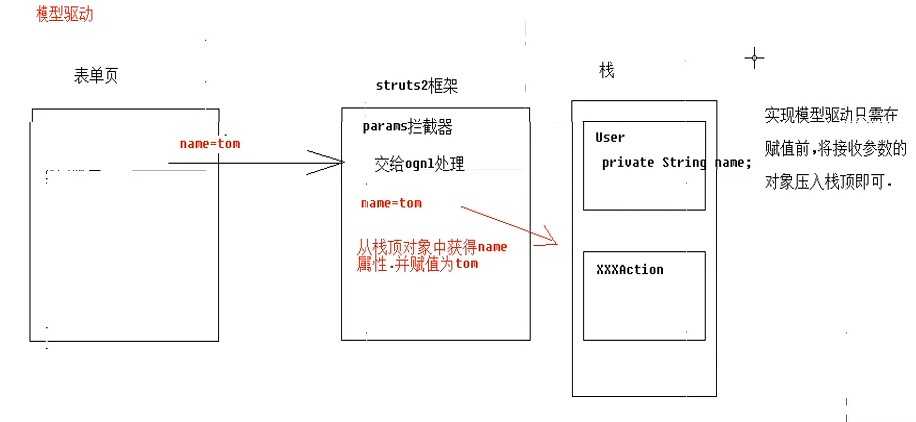标签:png fun extends 复杂 check label defaults 微软雅黑 部分








<?xml version="1.0" encoding="UTF-8"?>
<!DOCTYPE struts PUBLIC
"-//Apache Software Foundation//DTD Struts Configuration 2.3//EN"
"http://struts.apache.org/dtds/struts-2.3.dtd">
<struts>
<!-- package:将Action配置封装,就是可以在package中配置很多action
name属性:包的名字,起标识作用,不能与其他包名重复
namespace属性:给action的访问路径定义一个命名空间
extends属性:继承一个指定包
abstract属性:包是否为抽象;标识性属性,标识该包不能独立运行,专门被继承
-->
<package name="hello" namespace="/hello" extends="struts-default">
<!-- action元素:配置action类
name属性:决定了Action访问资源名
method属性:指定调用Action中的哪个方法来处理请求
-->
<action name="HelloAction" class="com.zzh.struts2.Demo.HelloAction" method="hello">
<!-- result元素:结果配置
name属性:标识结果处理的名称,与action方法的返回值对应
type属性:指定调用哪一个result类来处理结果,默认使用转发
标签体:填写页面的相对路径
-->
<result name="success" type="dispatcher">/hello.jsp</result>
</action>
</package>
</struts> <struts> <!-- package:将Action配置封装,就是可以在package中配置很多action name属性:包的名字,起标识作用,不能与其他包名重复 namespace属性:给action的访问路径定义一个命名空间 extends属性:继承一个指定包 abstract属性:包是否为抽象;标识性属性,标识该包不能独立运行,专门被继承 --> <package name="hello" namespace="/hello" extends="struts-default"> <!-- action元素:配置action类 name属性:决定了Action访问资源名 method属性:指定调用Action中的哪个方法来处理请求 --> <action name="HelloAction" class="com.zzh.struts2.Demo.HelloAction" method="hello"> <!-- result元素:结果配置 name属性:标识结果处理的名称,与action方法的返回值对应 type属性:指定调用哪一个result类来处理结果,默认使用转发 标签体:填写页面的相对路径 --> <result name="success" type="dispatcher">/hello.jsp</result> </action> </package></struts>




<!-- i18n:国际化,解决post提交乱码 -->
<constant name="struts.i18n.encoding" value="UTF-8"></constant>
<!-- 指访问action时的后缀名 -->
<constant name="struts.action.extension" value="action,,"></constant>
<!-- 指定struts2是否以开发模式运行
1.热加载主配置(不需要重启即可生效)
2.提供更多错误信息输出,方便开发时的调试
-->
<constant name="struts.devMode" value="true"></constant> <!-- i18n:国际化,解决post提交乱码 --> <constant name="struts.i18n.encoding" value="UTF-8"></constant> <!-- 指访问action时的后缀名 --> <constant name="struts.action.extension" value="action,,"></constant> <!-- 指定struts2是否以开发模式运行 1.热加载主配置(不需要重启即可生效) 2.提供更多错误信息输出,方便开发时的调试 --> <constant name="struts.devMode" value="true"></constant>

<?xml version="1.0" encoding="UTF-8"?>
<!DOCTYPE struts PUBLIC
"-//Apache Software Foundation//DTD Struts Configuration 2.3//EN"
"http://struts.apache.org/dtds/struts-2.3.dtd">
<struts>
<package name="dynamic" namespace="/dynamic" extends="struts-default">
<!-- 动态方法调用方式2:通配符方式
使用{1}取出第一个星号通配的内容
-->
<action name="Demo1Action_*" class="com.zzh.struts2.dynamic.Demo1Action" method="{1}">
<result name="success">/hello.jsp</result>
</action>
</package>
<include file="com/zzh/struts2/Demo/struts.xml"></include>
</struts> <struts> <package name="dynamic" namespace="/dynamic" extends="struts-default"> <!-- 动态方法调用方式2:通配符方式 使用{1}取出第一个星号通配的内容 --> <action name="Demo1Action_*" class="com.zzh.struts2.dynamic.Demo1Action" method="{1}"> <result name="success">/hello.jsp</result> </action> </package> <include file="com/zzh/struts2/Demo/struts.xml"></include></struts>
package com.zzh.struts2.api;
//方式1:创建一个普通类POJO
//POJO:不用继承任何父类,也不需要实现任何接口
//使struts2框架的代码侵入性更低
public class Demo1Action {
}
package com.zzh.struts2.api;//方式1:创建一个普通类POJO//POJO:不用继承任何父类,也不需要实现任何接口//使struts2框架的代码侵入性更低public class Demo1Action {}package com.zzh.struts2.api;
import com.opensymphony.xwork2.Action;
//方式2:实现一个接口Action
//里面有execute方法,提供action方法的规范
//Action接口预置了一些字符串,可以在返回结果时使用,为了方便
public class Demo2Action implements Action{
@Override
public String execute() throws Exception {
return null;
}
}
package com.zzh.struts2.api;import com.opensymphony.xwork2.Action;//方式2:实现一个接口Action//里面有execute方法,提供action方法的规范//Action接口预置了一些字符串,可以在返回结果时使用,为了方便public class Demo2Action implements Action{ public String execute() throws Exception { return null; }}package com.zzh.struts2.api;
import com.opensymphony.xwork2.ActionSupport;
//方式3:继承ActionSupport类
//帮我们实现了Validateable ValidationAware TextProvider LocaleProvider
//如果需要用到这些接口的实现时,不需要自己来实现
public class Demo3Action extends ActionSupport{
}
package com.zzh.struts2.api;import com.opensymphony.xwork2.ActionSupport;//方式3:继承ActionSupport类//帮我们实现了Validateable ValidationAware TextProvider LocaleProvider//如果需要用到这些接口的实现时,不需要自己来实现public class Demo3Action extends ActionSupport{ }


<!-- 转发 -->
<action name="Demo1Action" class="com.zzh.struts.result.Demo1Action" method="execute">
<result name="success">/hello.jsp</result>
</action> <!-- 转发 --> <action name="Demo1Action" class="com.zzh.struts.result.Demo1Action" method="execute"> <result name="success">/hello.jsp</result> </action> <!-- 重定向 -->
<action name="Demo2Action" class="com.zzh.struts.result.Demo2Action" method="execute">
<result name="success" type="redirect">/hello.jsp</result>
</action> <!-- 重定向 --> <action name="Demo2Action" class="com.zzh.struts.result.Demo2Action" method="execute"> <result name="success" type="redirect">/hello.jsp</result> </action> <!-- 转发到Action -->
<action name="Demo3Action" class="com.zzh.struts.result.Demo3Action" method="execute">
<result name="success" type="chain">
<!-- 转发到的action名 -->
<param name="actionName">Demo1Action</param>
<!-- action所在的命名空间 -->
<param name="namespace">/</param>
</result>
</action> <!-- 转发到Action --> <action name="Demo3Action" class="com.zzh.struts.result.Demo3Action" method="execute"> <result name="success" type="chain"> <!-- 转发到的action名 --> <param name="actionName">Demo1Action</param> <!-- action所在的命名空间 --> <param name="namespace">/</param> </result> </action> <!-- 重定向到Action -->
<action name="Demo4Action" class="com.zzh.struts.result.Demo4Action" method="execute">
<result name="success" type="redirectAction">
<!-- 重定向到的action名 -->
<param name="actionName">Demo2Action</param>
<!-- action所在的命名空间 -->
<param name="namespace">/</param>
</result>
</action> <!-- 重定向到Action --> <action name="Demo4Action" class="com.zzh.struts.result.Demo4Action" method="execute"> <result name="success" type="redirectAction"> <!-- 重定向到的action名 --> <param name="actionName">Demo2Action</param> <!-- action所在的命名空间 --> <param name="namespace">/</param> </result> </action>
package com.zzh.struts.api;
import java.util.Map;
import com.opensymphony.xwork2.ActionContext;
import com.opensymphony.xwork2.ActionSupport;
public class Demo5Action extends ActionSupport{
public String execute() throws Exception {
//request域 =>Map (struts2并不推荐使用原声request域)
//不推荐
Map<String,Object> requestScope = (Map<String, Object>) ActionContext.getContext().get("request");
//推荐
ActionContext.getContext().put("name", "requestTom");
//session域 =>Map
Map<String, Object> sessionScope = ActionContext.getContext().getSession();
sessionScope.put("name", "sessionTom");
//application域 =>Map
Map<String, Object> applicationScope = ActionContext.getContext().getApplication();
applicationScope.put("name","applicationTom");
return SUCCESS;
}
}package com.zzh.struts.api;import java.util.Map;import com.opensymphony.xwork2.ActionContext;import com.opensymphony.xwork2.ActionSupport;public class Demo5Action extends ActionSupport{ public String execute() throws Exception { //request域 =>Map (struts2并不推荐使用原声request域) //不推荐 Map<String,Object> requestScope = (Map<String, Object>) ActionContext.getContext().get("request"); //推荐 ActionContext.getContext().put("name", "requestTom"); //session域 =>Map Map<String, Object> sessionScope = ActionContext.getContext().getSession(); sessionScope.put("name", "sessionTom"); //application域 =>Map Map<String, Object> applicationScope = ActionContext.getContext().getApplication(); applicationScope.put("name","applicationTom"); return SUCCESS; }}public class Demo6Action extends ActionSupport{
//不推荐使用
public String execute() throws Exception {
//原生request
HttpServletRequest request = ServletActionContext.getRequest();
//原生session
HttpSession session = request.getSession();
//原生response
HttpServletResponse response = ServletActionContext.getResponse();
//原生servletContext
ServletContext servletContext = ServletActionContext.getServletContext();
return SUCCESS;
}
}public class Demo6Action extends ActionSupport{ //不推荐使用 public String execute() throws Exception { //原生request HttpServletRequest request = ServletActionContext.getRequest(); //原生session HttpSession session = request.getSession(); //原生response HttpServletResponse response = ServletActionContext.getResponse(); //原生servletContext ServletContext servletContext = ServletActionContext.getServletContext(); return SUCCESS; }}public class Demo7Action extends ActionSupport implements ServletRequestAware{
private HttpServletRequest request;
public String execute() throws Exception {
System.out.println("原生request");
return SUCCESS;
}
public void setServletRequest(HttpServletRequest request) {
this.request=request;
}
}public class Demo7Action extends ActionSupport implements ServletRequestAware{ private HttpServletRequest request; public String execute() throws Exception { System.out.println("原生request"); return SUCCESS; } public void setServletRequest(HttpServletRequest request) { this.request=request; }}

package com.zzh.struts.param;
import java.util.Date;
import java.util.Map;
import javax.servlet.ServletContext;
import javax.servlet.http.HttpServletRequest;
import javax.servlet.http.HttpServletResponse;
import javax.servlet.http.HttpSession;
import org.apache.struts2.ServletActionContext;
import org.apache.struts2.interceptor.ServletRequestAware;
import com.opensymphony.xwork2.ActionContext;
import com.opensymphony.xwork2.ActionSupport;
//如何获得参数
//每次请求Action时都会创建新的Action实例对象
public class Demo8Action extends ActionSupport{
//准备与参数键名称相同的属性
private String name;
//自动类型转换,只能转换八大基本数据类型以及对应包装类
private Integer age;
//支持特定类型字符串转换为Date,例如yyyy-MM-dd
private Date birthday;
public String execute() throws Exception {
System.out.println("name参数值"+name+",age参数值:"+age+",birthday参数值:"+birthday);
return SUCCESS;
}
public Integer getAge() {
return age;
}
public void setAge(Integer age) {
this.age = age;
}
public Date getBirthday() {
return birthday;
}
public void setBirthday(Date birthday) {
this.birthday = birthday;
}
public String getName() {
return name;
}
public void setName(String name) {
this.name = name;
}
}package com.zzh.struts.param;import java.util.Date;import java.util.Map;import javax.servlet.ServletContext;import javax.servlet.http.HttpServletRequest;import javax.servlet.http.HttpServletResponse;import javax.servlet.http.HttpSession;import org.apache.struts2.ServletActionContext;import org.apache.struts2.interceptor.ServletRequestAware;import com.opensymphony.xwork2.ActionContext;import com.opensymphony.xwork2.ActionSupport;//如何获得参数//每次请求Action时都会创建新的Action实例对象public class Demo8Action extends ActionSupport{ //准备与参数键名称相同的属性 private String name; //自动类型转换,只能转换八大基本数据类型以及对应包装类 private Integer age; //支持特定类型字符串转换为Date,例如yyyy-MM-dd private Date birthday; public String execute() throws Exception { System.out.println("name参数值"+name+",age参数值:"+age+",birthday参数值:"+birthday); return SUCCESS; } public Integer getAge() { return age; } public void setAge(Integer age) { this.age = age; } public Date getBirthday() { return birthday; } public void setBirthday(Date birthday) { this.birthday = birthday; } public String getName() { return name; } public void setName(String name) { this.name = name; }}package com.zzh.struts.param;
import java.util.Date;
import java.util.Map;
import javax.servlet.ServletContext;
import javax.servlet.http.HttpServletRequest;
import javax.servlet.http.HttpServletResponse;
import javax.servlet.http.HttpSession;
import org.apache.struts2.ServletActionContext;
import org.apache.struts2.interceptor.ServletRequestAware;
import com.opensymphony.xwork2.ActionContext;
import com.opensymphony.xwork2.ActionSupport;
import com.zzh.struts.domain.User;
//如何获得参数
//每次请求Action时都会创建新的Action实例对象
public class Demo9Action extends ActionSupport{
//准备USER对象
private User user;
public String execute() throws Exception {
System.out.println(user);
return SUCCESS;
}
public User getUser() {
return user;
}
public void setUser(User user) {
this.user = user;
}
}package com.zzh.struts.param;import java.util.Date;import java.util.Map;import javax.servlet.ServletContext;import javax.servlet.http.HttpServletRequest;import javax.servlet.http.HttpServletResponse;import javax.servlet.http.HttpSession;import org.apache.struts2.ServletActionContext;import org.apache.struts2.interceptor.ServletRequestAware;import com.opensymphony.xwork2.ActionContext;import com.opensymphony.xwork2.ActionSupport;import com.zzh.struts.domain.User;//如何获得参数//每次请求Action时都会创建新的Action实例对象public class Demo9Action extends ActionSupport{ //准备USER对象 private User user; public String execute() throws Exception { System.out.println(user); return SUCCESS; } public User getUser() { return user; } public void setUser(User user) { this.user = user; } } <form action="${pageContext.request.contextPath }/Demo9Action">
用户名:<input type="text" name="user.name"><br>
年龄:<input type="text" name="user.age"><br>
生日:<input type="text" name="user.birthday"><br>
<input type="submit" value="提交">
</form> <form action="${pageContext.request.contextPath }/Demo9Action"> 用户名:<input type="text" name="user.name"><br> 年龄:<input type="text" name="user.age"><br> 生日:<input type="text" name="user.birthday"><br> <input type="submit" value="提交"> </form>public class Demo10Action extends ActionSupport implements ModelDriven<User>{
//准备USER 成员变量
private User user = new User();
public String execute() throws Exception {
System.out.println(user);
return SUCCESS;
}
@Override
public User getModel() {
return user;
}
}public class Demo10Action extends ActionSupport implements ModelDriven<User>{ //准备USER 成员变量 private User user = new User(); public String execute() throws Exception { System.out.println(user); return SUCCESS; } public User getModel() { return user; }} <form action="${pageContext.request.contextPath }/Demo10Action">
用户名:<input type="text" name="name"><br>
年龄:<input type="text" name="age"><br>
生日:<input type="text" name="birthday"><br>
<input type="submit" value="提交">
</form> <form action="${pageContext.request.contextPath }/Demo10Action"> 用户名:<input type="text" name="name"><br> 年龄:<input type="text" name="age"><br> 生日:<input type="text" name="birthday"><br> <input type="submit" value="提交"> </form>




//Ognl基本语法演示
//取出root中的属性值
@Test
public void fun2() throws OgnlException {
//准备OGNLContext
//准备Root
User rootUser = new User("zzh",21);
//准备Context
Map<String,User> context = new HashMap<String,User>();
context.put("user1", new User("jack",18));
context.put("user2", new User("rose",22));
OgnlContext oc = new OgnlContext();
oc.setRoot(rootUser);
oc.setValues(context);
//书写OGNL
//取出root中user对象的name属性
String name = (String) Ognl.getValue("name", oc, oc.getRoot());
//取出root中user对象的age属性
Integer age = (Integer) Ognl.getValue("age", oc, oc.getRoot());
System.out.println(name);
System.out.println(age);
} //Ognl基本语法演示 //取出root中的属性值 public void fun2() throws OgnlException { //准备OGNLContext //准备Root User rootUser = new User("zzh",21); //准备Context Map<String,User> context = new HashMap<String,User>(); context.put("user1", new User("jack",18)); context.put("user2", new User("rose",22)); OgnlContext oc = new OgnlContext(); oc.setRoot(rootUser); oc.setValues(context); //书写OGNL //取出root中user对象的name属性 String name = (String) Ognl.getValue("name", oc, oc.getRoot()); //取出root中user对象的age属性 Integer age = (Integer) Ognl.getValue("age", oc, oc.getRoot()); System.out.println(name); System.out.println(age); } //Ognl基本语法演示
//取出context中的属性值
@Test
public void fun3() throws OgnlException {
//准备OGNLContext
//准备Root
User rootUser = new User("zzh",21);
//准备Context
Map<String,User> context = new HashMap<String,User>();
context.put("user1", new User("jack",18));
context.put("user2", new User("rose",22));
OgnlContext oc = new OgnlContext();
oc.setRoot(rootUser);
oc.setValues(context);
//书写OGNL
//取出context中user对象的name属性 #代表从域中取值
String name = (String) Ognl.getValue("#user1.name", oc, oc.getRoot());
//取出context中user对象的age属性
Integer age = (Integer) Ognl.getValue("#user2.age", oc, oc.getRoot());
System.out.println(name);
System.out.println(age);
} //Ognl基本语法演示 //取出context中的属性值 public void fun3() throws OgnlException { //准备OGNLContext //准备Root User rootUser = new User("zzh",21); //准备Context Map<String,User> context = new HashMap<String,User>(); context.put("user1", new User("jack",18)); context.put("user2", new User("rose",22)); OgnlContext oc = new OgnlContext(); oc.setRoot(rootUser); oc.setValues(context); //书写OGNL //取出context中user对象的name属性 #代表从域中取值 String name = (String) Ognl.getValue("#user1.name", oc, oc.getRoot()); //取出context中user对象的age属性 Integer age = (Integer) Ognl.getValue("#user2.age", oc, oc.getRoot()); System.out.println(name); System.out.println(age); } //Ognl基本语法演示
//为属性赋值
@Test
public void fun4() throws OgnlException {
//准备OGNLContext
//准备Root
User rootUser = new User("zzh",21);
//准备Context
Map<String,User> context = new HashMap<String,User>();
context.put("user1", new User("jack",18));
context.put("user2", new User("rose",22));
OgnlContext oc = new OgnlContext();
//将rootUser作为root部分
oc.setRoot(rootUser);
//将context这个Map作为Context对象
oc.setValues(context);
//书写OGNL
//将root中的user对象的name属性赋值
Ognl.getValue("name=‘朱展鸿‘", oc, oc.getRoot());
//取出context中user对象的age属性
String name = (String) Ognl.getValue("name", oc, oc.getRoot());
Integer age = (Integer) Ognl.getValue("#user1.age=‘11‘,#user1.age", context, oc.getRoot());
System.out.println(name);
System.out.println(age);
} //Ognl基本语法演示 //为属性赋值 public void fun4() throws OgnlException { //准备OGNLContext //准备Root User rootUser = new User("zzh",21); //准备Context Map<String,User> context = new HashMap<String,User>(); context.put("user1", new User("jack",18)); context.put("user2", new User("rose",22)); OgnlContext oc = new OgnlContext(); //将rootUser作为root部分 oc.setRoot(rootUser); //将context这个Map作为Context对象 oc.setValues(context); //书写OGNL //将root中的user对象的name属性赋值 Ognl.getValue("name=‘朱展鸿‘", oc, oc.getRoot()); //取出context中user对象的age属性 String name = (String) Ognl.getValue("name", oc, oc.getRoot()); Integer age = (Integer) Ognl.getValue("#user1.age=‘11‘,#user1.age", context, oc.getRoot()); System.out.println(name); System.out.println(age); } //Ognl基本语法演示
//调用方法
@Test
public void fun5() throws OgnlException {
//准备OGNLContext
//准备Root
User rootUser = new User("zzh",21);
//准备Context
Map<String,User> context = new HashMap<String,User>();
context.put("user1", new User("jack",18));
context.put("user2", new User("rose",22));
OgnlContext oc = new OgnlContext();
oc.setRoot(rootUser);
oc.setValues(context);
//书写OGNL
//调用root中的set方法
Ognl.getValue("setName(‘??‘)", oc, oc.getRoot());
//取出context中user对象的age属性
String name = (String) Ognl.getValue("getName()", oc, oc.getRoot());
System.out.println(name);
} //Ognl基本语法演示 //调用方法 public void fun5() throws OgnlException { //准备OGNLContext //准备Root User rootUser = new User("zzh",21); //准备Context Map<String,User> context = new HashMap<String,User>(); context.put("user1", new User("jack",18)); context.put("user2", new User("rose",22)); OgnlContext oc = new OgnlContext(); oc.setRoot(rootUser); oc.setValues(context); //书写OGNL //调用root中的set方法 Ognl.getValue("setName(‘??‘)", oc, oc.getRoot()); //取出context中user对象的age属性 String name = (String) Ognl.getValue("getName()", oc, oc.getRoot()); System.out.println(name); } //Ognl基本语法演示
//调用静态方法
@Test
public void fun6() throws OgnlException {
//准备OGNLContext
//准备Root
User rootUser = new User("zzh",21);
//准备Context
Map<String,User> context = new HashMap<String,User>();
context.put("user1", new User("jack",18));
context.put("user2", new User("rose",22));
OgnlContext oc = new OgnlContext();
oc.setRoot(rootUser);
oc.setValues(context);
//书写OGNL
//调用静态方法
String test = (String) Ognl.getValue("@com.zzh.struts.utils.HahaUtils@echo(‘lalala‘)", oc, oc.getRoot());
//Double pi = (Double) Ognl.getValue("@java.lang.Math@PI", oc, oc.getRoot());
Double pi = (Double) Ognl.getValue("@@PI", oc, oc.getRoot());
System.out.println(test);
System.out.println(pi);
} //Ognl基本语法演示 //调用静态方法 public void fun6() throws OgnlException { //准备OGNLContext //准备Root User rootUser = new User("zzh",21); //准备Context Map<String,User> context = new HashMap<String,User>(); context.put("user1", new User("jack",18)); context.put("user2", new User("rose",22)); OgnlContext oc = new OgnlContext(); oc.setRoot(rootUser); oc.setValues(context); //书写OGNL //调用静态方法 String test = (String) Ognl.getValue("@com.zzh.struts.utils.HahaUtils@echo(‘lalala‘)", oc, oc.getRoot()); //Double pi = (Double) Ognl.getValue("@java.lang.Math@PI", oc, oc.getRoot()); Double pi = (Double) Ognl.getValue("@@PI", oc, oc.getRoot()); System.out.println(test); System.out.println(pi); } //Ognl基本语法演示
//ognl创建对象 List|Map对象
@Test
public void fun7() throws OgnlException {
//准备OGNLContext
//准备Root
User rootUser = new User("zzh",21);
//准备Context
Map<String,User> context = new HashMap<String,User>();
context.put("user1", new User("jack",18));
context.put("user2", new User("rose",22));
OgnlContext oc = new OgnlContext();
oc.setRoot(rootUser);
oc.setValues(context);
//书写OGNL
//创建List对象
Integer size = (Integer) Ognl.getValue("{‘zzh‘,‘jerry‘,‘tom‘}.size()", oc, oc.getRoot());
String test1 = (String) Ognl.getValue("{‘zzh‘,‘jerry‘,‘tom‘}[0]", oc, oc.getRoot());
String test2 = (String) Ognl.getValue("{‘zzh‘,‘jerry‘,‘tom‘}.get(1)", oc, oc.getRoot());
System.out.println(size);
System.out.println(test1);
System.out.println(test2);
//#表示的是创建一个Map对象
Integer size2 = (Integer) Ognl.getValue("#{‘name‘:‘zzh‘,‘age‘:18}.size()", oc, oc.getRoot());
String test3 = (String) Ognl.getValue("#{‘name‘:‘zzh‘,‘age‘:18}[‘name‘]", oc, oc.getRoot());
System.out.println(size2);
System.out.println(test3);
} //Ognl基本语法演示 //ognl创建对象 List|Map对象 public void fun7() throws OgnlException { //准备OGNLContext //准备Root User rootUser = new User("zzh",21); //准备Context Map<String,User> context = new HashMap<String,User>(); context.put("user1", new User("jack",18)); context.put("user2", new User("rose",22)); OgnlContext oc = new OgnlContext(); oc.setRoot(rootUser); oc.setValues(context); //书写OGNL //创建List对象 Integer size = (Integer) Ognl.getValue("{‘zzh‘,‘jerry‘,‘tom‘}.size()", oc, oc.getRoot()); String test1 = (String) Ognl.getValue("{‘zzh‘,‘jerry‘,‘tom‘}[0]", oc, oc.getRoot()); String test2 = (String) Ognl.getValue("{‘zzh‘,‘jerry‘,‘tom‘}.get(1)", oc, oc.getRoot()); System.out.println(size); System.out.println(test1); System.out.println(test2); //#表示的是创建一个Map对象 Integer size2 = (Integer) Ognl.getValue("#{‘name‘:‘zzh‘,‘age‘:18}.size()", oc, oc.getRoot()); String test3 = (String) Ognl.getValue("#{‘name‘:‘zzh‘,‘age‘:18}[‘name‘]", oc, oc.getRoot()); System.out.println(size2); System.out.println(test3); }







package com.zzh.struts.param;
import com.opensymphony.xwork2.ActionContext;
import com.opensymphony.xwork2.ActionSupport;
import com.opensymphony.xwork2.Preparable;
import com.opensymphony.xwork2.util.ValueStack;
import com.zzh.struts.domain.User;
//模型驱动的本质就是preparable接口
public class Demo2Action extends ActionSupport implements Preparable{
User user = new User();
public String execute() throws Exception {
System.out.println(user);
return SUCCESS;
}
@Override
public void prepare() throws Exception {
//压入栈顶
//1.获得栈
ValueStack vs = ActionContext.getContext().getValueStack();
//2.压入栈顶
vs.push(user);
}
}package com.zzh.struts.param;import com.opensymphony.xwork2.ActionContext;import com.opensymphony.xwork2.ActionSupport;import com.opensymphony.xwork2.Preparable;import com.opensymphony.xwork2.util.ValueStack;import com.zzh.struts.domain.User;//模型驱动的本质就是preparable接口public class Demo2Action extends ActionSupport implements Preparable{ User user = new User(); public String execute() throws Exception { System.out.println(user); return SUCCESS; } public void prepare() throws Exception { //压入栈顶 //1.获得栈 ValueStack vs = ActionContext.getContext().getValueStack(); //2.压入栈顶 vs.push(user); } }


<%@ page language="java" contentType="text/html; charset=UTF-8"
pageEncoding="UTF-8"%>
<%@ taglib uri="/struts-tags" prefix="s" %>
<!DOCTYPE html PUBLIC "-//W3C//DTD HTML 4.01 Transitional//EN" "http://www.w3.org/TR/html4/loose.dtd">
<html>
<head>
<meta http-equiv="Content-Type" content="text/html; charset=UTF-8">
<title>Insert title here</title>
</head>
<body>
<!-- 遍历标签iterator -->
<s:iterator value="#list">
<s:property /><br>
</s:iterator>
<hr>
<s:iterator value="#list" var="name">
<s:property value="#name"/><br>
</s:iterator>
<hr>
<s:iterator begin="1" end="100" step="1">
<s:property />
</s:iterator>
<hr>
<s:if test="#list.size()==4">
list长度为4
</s:if>
<s:elseif test="#list.size()==5">
list长度为5
</s:elseif>
<s:else>
list长度是个谜
</s:else>
<hr>
<s:property value="#list.size"/>
</body>
</html><%@ page language="java" contentType="text/html; charset=UTF-8" pageEncoding="UTF-8"%><%@ taglib uri="/struts-tags" prefix="s" %><html><head><meta http-equiv="Content-Type" content="text/html; charset=UTF-8"><title>Insert title here</title></head><body> <!-- 遍历标签iterator --> <s:iterator value="#list"> <s:property /><br> </s:iterator> <hr> <s:iterator value="#list" var="name"> <s:property value="#name"/><br> </s:iterator> <hr> <s:iterator begin="1" end="100" step="1"> <s:property /> </s:iterator> <hr> <s:if test="#list.size()==4"> list长度为4 </s:if> <s:elseif test="#list.size()==5"> list长度为5 </s:elseif> <s:else> list长度是个谜 </s:else> <hr> <s:property value="#list.size"/> </body></html><%@ page language="java" contentType="text/html; charset=UTF-8"
pageEncoding="UTF-8"%>
<%@ taglib uri="/struts-tags" prefix="s" %>
<!DOCTYPE html PUBLIC "-//W3C//DTD HTML 4.01 Transitional//EN" "http://www.w3.org/TR/html4/loose.dtd">
<html>
<head>
<meta http-equiv="Content-Type" content="text/html; charset=UTF-8">
<title>Insert title here</title>
</head>
<body>
<!--struts2表单标签 -->
<!-- 好处:
1.内置了一套样式
2.自动回显,根据栈中属性
-->
<s:form action="Demo2Action" namespace="/" theme="xhtml">
<s:textfield name="name" lable="用户名"></s:textfield>
<s:password name="password" lable="密码"></s:password>
<s:radio list="#{1:‘男‘ 0:‘女‘ }" name="gender" lable="性别"></s:radio>
<s:checkboxlist list="#{2:‘diannao‘ 1:‘dianshi‘ }" name="habits" lable="兴趣"></s:checkboxlist>
<s:select list="#{2:‘大专‘ 3:‘本科‘ }" headerKey="" headerValue="---请选择---" name="edu" lable="学历"></s:select>
<s:file name="img" lable="个人照片"></s:file>
<s:textarea name="desc" label="简介"></s:textarea>
<s:submit value="提交"></s:submit>
</s:form>
<s:actionerror/>
</body>
</html><%@ page language="java" contentType="text/html; charset=UTF-8" pageEncoding="UTF-8"%><%@ taglib uri="/struts-tags" prefix="s" %><html><head><meta http-equiv="Content-Type" content="text/html; charset=UTF-8"><title>Insert title here</title></head><body> <!--struts2表单标签 --> <!-- 好处: 1.内置了一套样式 2.自动回显,根据栈中属性 --> <s:form action="Demo2Action" namespace="/" theme="xhtml"> <s:textfield name="name" lable="用户名"></s:textfield> <s:password name="password" lable="密码"></s:password> <s:radio list="#{1:‘男‘ 0:‘女‘ }" name="gender" lable="性别"></s:radio> <s:checkboxlist list="#{2:‘diannao‘ 1:‘dianshi‘ }" name="habits" lable="兴趣"></s:checkboxlist> <s:select list="#{2:‘大专‘ 3:‘本科‘ }" headerKey="" headerValue="---请选择---" name="edu" lable="学历"></s:select> <s:file name="img" lable="个人照片"></s:file> <s:textarea name="desc" label="简介"></s:textarea> <s:submit value="提交"></s:submit> </s:form> <s:actionerror/></body></html>





package com.zzh.struts.interceptor;
import com.opensymphony.xwork2.ActionInvocation;
import com.opensymphony.xwork2.interceptor.Interceptor;
public class MyInterceptor1 implements Interceptor{
public void destroy() {
}
public void init() {
}
public String intercept(ActionInvocation arg0) throws Exception {
return null;
}
}
x
package com.zzh.struts.interceptor;import com.opensymphony.xwork2.ActionInvocation;import com.opensymphony.xwork2.interceptor.Interceptor;public class MyInterceptor1 implements Interceptor{ public void destroy() { } public void init() { } public String intercept(ActionInvocation arg0) throws Exception { return null; } }package com.zzh.struts.interceptor;
import com.opensymphony.xwork2.ActionInvocation;
import com.opensymphony.xwork2.interceptor.AbstractInterceptor;
public class MyInterceptor2 extends AbstractInterceptor{
public String intercept(ActionInvocation arg0) throws Exception {
return null;
}
}x
package com.zzh.struts.interceptor;import com.opensymphony.xwork2.ActionInvocation;import com.opensymphony.xwork2.interceptor.AbstractInterceptor;public class MyInterceptor2 extends AbstractInterceptor{ public String intercept(ActionInvocation arg0) throws Exception { return null; }}package com.zzh.struts.interceptor;
import com.opensymphony.xwork2.ActionInvocation;
import com.opensymphony.xwork2.interceptor.MethodFilterInterceptor;
public class MyInterceptor3 extends MethodFilterInterceptor{
protected String doIntercept(ActionInvocation arg0) throws Exception {
return null;
}
}x
package com.zzh.struts.interceptor;import com.opensymphony.xwork2.ActionInvocation;import com.opensymphony.xwork2.interceptor.MethodFilterInterceptor;public class MyInterceptor3 extends MethodFilterInterceptor{ protected String doIntercept(ActionInvocation arg0) throws Exception { return null; }}

<?xml version="1.0" encoding="UTF-8"?>
<!DOCTYPE struts PUBLIC
"-//Apache Software Foundation//DTD Struts Configuration 2.3//EN"
"http://struts.apache.org/dtds/struts-2.3.dtd">
<struts>
<constant name="struts.devMode" value="true"></constant>
<package name="inter" namespace="/" extends="struts-default">
<interceptors>
<!-- 1.注册拦截器 -->
<interceptor name="myInter3" class="com.zzh.struts.interceptor.MyInterceptor3"></interceptor>
<!-- 2.注册拦截器栈 -->
<interceptor-stack name="myStack">
<!-- 自定义拦截器引入(建议放在20个拦截器之前) -->
<interceptor-ref name="myInter3">
<!-- 指定哪些方法不拦截 -->
<param name="excludeMethods">add,find</param>
<!-- 指定哪些方法拦截
<param name="includeMethods">add,delete</param>
-->
</interceptor-ref>
<!-- 引用默认的拦截器栈(20个) -->
<interceptor-ref name="defaultStack"></interceptor-ref>
</interceptor-stack>
</interceptors>
<!-- 3.指定包中默认拦截器栈 -->
<default-interceptor-ref name="myStack"></default-interceptor-ref>
<action name="Demo1Action_*" class="com.zzh.struts.interceptor.Demo1Action" method="{1}">
<result name="success">/hello.jsp</result>
</action>
</package>
</struts> <struts> <constant name="struts.devMode" value="true"></constant> <package name="inter" namespace="/" extends="struts-default"> <interceptors> <!-- 1.注册拦截器 --> <interceptor name="myInter3" class="com.zzh.struts.interceptor.MyInterceptor3"></interceptor> <!-- 2.注册拦截器栈 --> <interceptor-stack name="myStack"> <!-- 自定义拦截器引入(建议放在20个拦截器之前) --> <interceptor-ref name="myInter3"> <!-- 指定哪些方法不拦截 --> <param name="excludeMethods">add,find</param> <!-- 指定哪些方法拦截 <param name="includeMethods">add,delete</param> --> </interceptor-ref> <!-- 引用默认的拦截器栈(20个) --> <interceptor-ref name="defaultStack"></interceptor-ref> </interceptor-stack> </interceptors> <!-- 3.指定包中默认拦截器栈 --> <default-interceptor-ref name="myStack"></default-interceptor-ref> <action name="Demo1Action_*" class="com.zzh.struts.interceptor.Demo1Action" method="{1}"> <result name="success">/hello.jsp</result> </action> </package></struts>

标签:png fun extends 复杂 check label defaults 微软雅黑 部分
原文地址:https://www.cnblogs.com/zzh1997/p/9601030.html